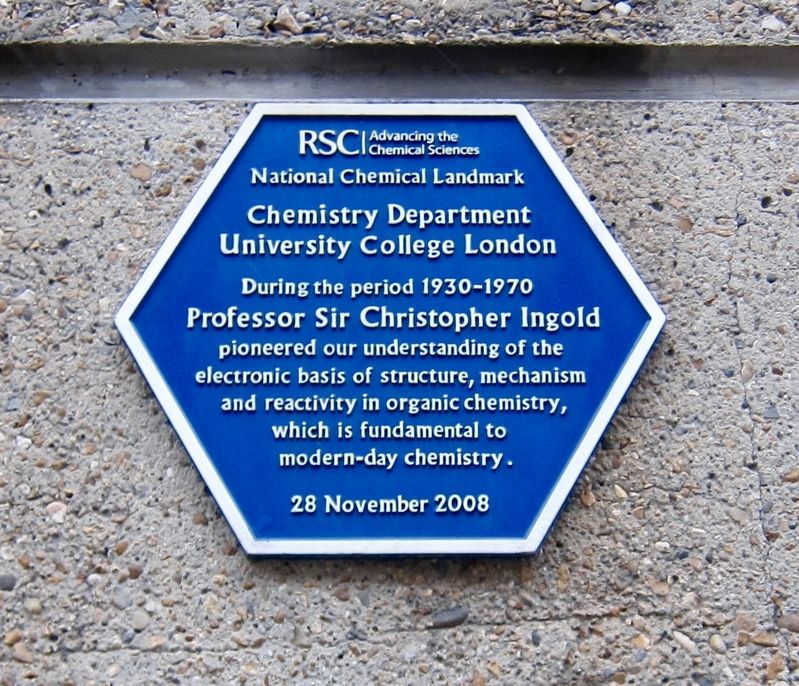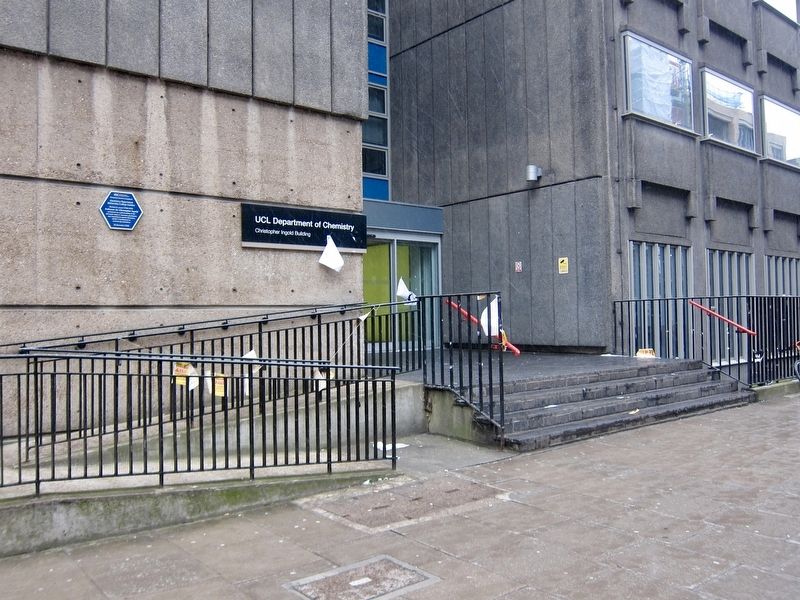Camden in Greater London, England, United Kingdom — Northwestern Europe (the British Isles)
Professor Sir Christopher Ingold
National Chemical Landmark
Chemistry Department
University College London
During the period 1930-1970
Professor Sir Christopher Ingold
pioneered our understanding of the
electronic basis of structure, mechanism
and reactivity in organic chemistry,
which is fundamental to
modern-day chemistry.
Erected 2008 by Royal Society of Chemistry.
Topics. This historical marker is listed in this topic list: Science & Medicine.
Location. 51° 31.523′ N, 0° 7.952′ W. Marker is in Camden, England, in Greater London. Marker is on Gordon Street just south of Endsleigh Gardens, on the left when traveling south. Touch for map. Marker is at or near this postal address: 20 Gordon Street, Camden, England WC1H 0AJ, United Kingdom. Touch for directions.
Other nearby markers. At least 8 other markers are within walking distance of this marker. London School of Tropical Medicine (within shouting distance of this marker); Noor Inayat Khan (about 120 meters away, measured in a direct line); Dr. Williams's Library (about 150 meters away); Rabindranath Tagore (about 180 meters away); Robert Travers Herford (about 180 meters away); Richard Trevithick (about 180 meters away); Ali Mohammed Abbas (about 180 meters away); John Maynard Keynes (about 180 meters away). Touch for a list and map of all markers in Camden.
Also see . . . Christopher Kelk Ingold (Wikipedia). "Sir Christopher Kelk Ingold FRS (28 October 1893 – 8 December 1970) was a British chemist based in Leeds and London. His groundbreaking work in the 1920s and 1930s on reaction mechanisms and the electronic structure of organic compounds was responsible for the introduction into mainstream chemistry of concepts such as nucleophile, electrophile, inductive and resonance effects, and such descriptors as SN1, SN2, E1, and E2. He also was a co-author of the Cahn–Ingold–Prelog priority rules. Ingold is regarded as one of the chief pioneers of physical organic chemistry." (Submitted on April 16, 2018.)
Credits. This page was last revised on January 27, 2022. It was originally submitted on April 16, 2018, by Andrew Ruppenstein of Lamorinda, California. This page has been viewed 145 times since then and 14 times this year. Photos: 1, 2. submitted on April 16, 2018, by Andrew Ruppenstein of Lamorinda, California.

